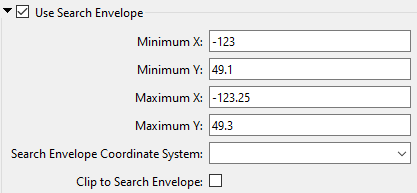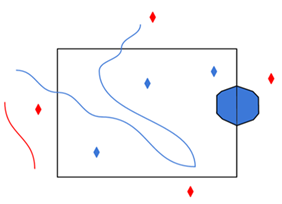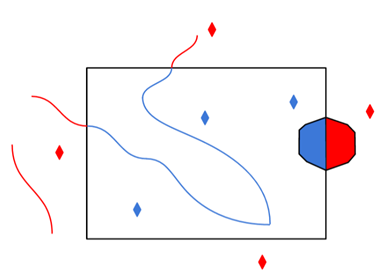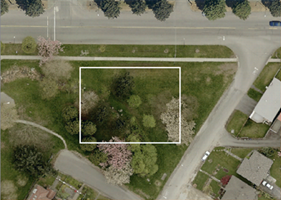Field Separation
Choose the separator that will divide the fields in the file. By default, this parameter is set to space; however, you can also select one of the following separators:
- , (comma)
- ; (semicolon)
- | (vertical bar)
- tab
By default, each separator is treated as if it separates a different field.
When this parameter is selected, multiple contiguous separators are treated as a single separator.
Some CSV files place quotation marks around all values they contain. When selected, this parameter will strip quotation marks from column values.
If the field or column names of the table are specified in the file, select this value and the names will be extracted from the file. Otherwise, the columns of the table are given default names (for example, col0, col1, ... , colN).
If the column/field names is AFTER the header information instead of BEFORE, then you can set this option. Otherwise, by default, the first line of the file will be used as the column/field names.
Lines to Skip
This indicates the number of lines to skip at the top of the file. By default, 1 line is skipped. Each line skipped is logged to the log file. This is useful if the file contains a header line of field names or other descriptive material (like comments) that should be skipped.
This field indicates the number of footer lines to skip at the bottom of the file. By default, no footer lines are skipped. Each footer line skipped is logged to the log file. This is useful if the file contains a footer line of descriptive material that should be skipped.
Limits the number of lines read into the point cloud.
Component Map Generation
Indicates the number of rows in the file that should be read to generate the automatic mapping of the component map.
The default is 10,000. If this parameter is set to 0, there will be no limit and all rows will be read.
File Preview
Displays a preview of the data, if available.
Point Cloud Component Map
Maps each data column in the Point Cloud XYZ file to a component of the point cloud. This table is automatically populated from the first Point Cloud XYZ file, if one is present. The component map is reset every time a parameter that affects the columns is changed.
If not specified, the point cloud will have one component for each column, with the component name equal to the column name, and where the type is determined by scanning the file.
|
A search envelope (also known as a bounding box) is a rectangular area that defines a geographic area. In FME, the easiest way to define a search envelope is to use search envelope parameters. Defining a search envelope is the most efficient method of selecting an area of interest because FME will read only the data that is necessary – it does not have to read an entire dataset. Search Envelope parameters apply to both vector and raster datasets and can be particularly efficient if the source format has a spatial index. Most FME readers have parameters to define the search envelope of data that is being read:
The parameters include the x and y coordinates of the bounding box as well as a parameter that defines the coordinate system. How to Define the Bounding Box Using the minimum and maximum x and y parameters, define a bounding box that will be used to filter the input features. Only features that intersect with the bounding box are returned. Note that the bounding box intersection is not a full geometry intersection (based on spatial relationships) that would be returned by a transformer like the SpatialFilter. Note If all four coordinates of the search envelope are left at 0, the search envelope will be disabled even if this option is checked.
|
|||||||
|
Search Envelope Coordinate System |
Specifies the coordinate system of the search envelope if it is different than the coordinate system of the data. The coordinate system associated with the data to be read must always be set if this parameter is set. If this parameter is set, the minimum and maximum points of the search envelope are reprojected from the Search Envelope Coordinate System to the reader’s coordinate system prior to applying the envelope. |
||||||
|
Clip to Search Envelope |
The underlying function for Use Search Envelope is an intersection; however, when Clip to Search Envelope is checked, a clipping operation is also performed.
|
||||||
Advanced
This parameter is applicable if you are working with extended (not basic ASCII) character sets. If your source data contains non-ASCII characters, using this parameter along with the encoding value ensures that the original data is preserved from the reader to the writer.
By default, the character encoding will be automatically detected from the local operating system. If you select any other character encoding, it will take precedence over the automatically detected character encoding.
FME supports most encodings.
Specifies whether string component data may contain separators.
This parameter must be set to Yes if the data contains separators, or the file may be read incorrectly. However, if there are no separators, setting this parameter to No may improve performance.
Use this parameter to expose Format Attributes in FME Workbench when you create a workspace:
- In a dynamic scenario, it means these attributes can be passed to the output dataset at runtime.
- In a non-dynamic scenario, this parameter allows you to expose additional attributes on multiple feature types. Click the browse button to view the available format attributes (which are different for each format) for the reader.




